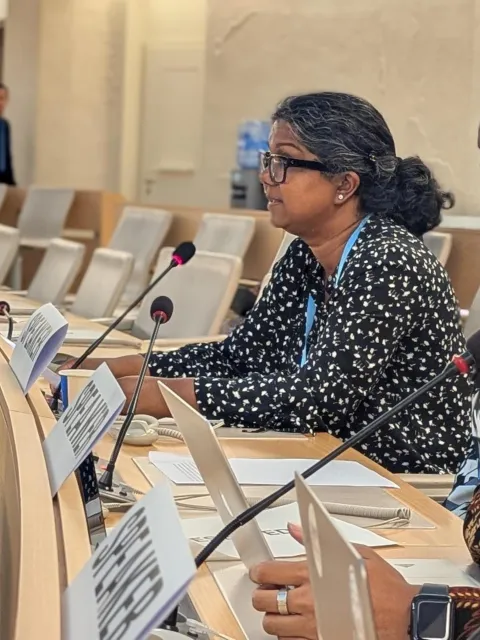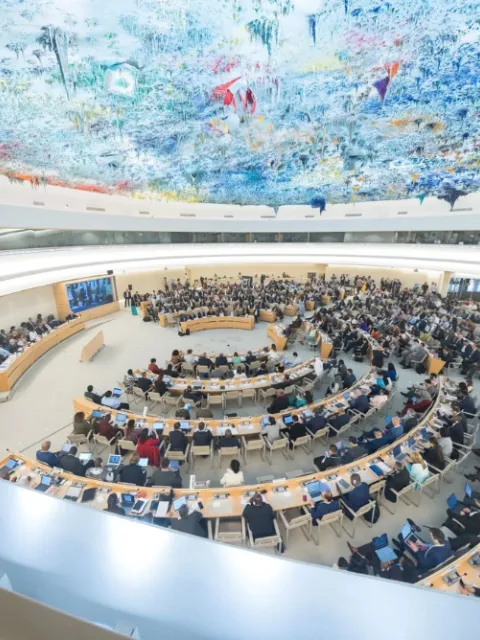Why clean air matters for cancer care and people living with cancer
Marking World Environment Day on 5 June, UICC presents insights from its evidence report on the growing impact of air pollution on cancer risks and on people living with the disease, and from the Dutch Cancer Society, a UICC member, highlighting the need to address clean air policies in national cancer control plans.

For people undergoing treatment, better air quality can also mean improved recovery, fewer complications, and less strain on health systems.
HIGHLIGHTS
- Air pollution causes over eight million deaths annually, with nearly 374,000 lung cancer deaths each year attributed to it.
- An evidence summary report commissioned by UICC, with input from its members’ expert taskforce, reveals PM2.5 exposure significantly raises risks for brain, liver, kidney, colorectal, and overall cancer, and that effective policies could reduce cancer-related deaths by over 300,000.
- The report also shows that vulnerable groups – including cancer patients, women, children, and low-income populations – face disproportionate risks from polluted air.
- Policy efforts such as the WHA’s 2040 roadmap and Dutch Cancer Society advocacy highlight clean air as a public health and economic imperative.
Air pollution contributes to an estimated 8.1 million deaths annually from non-communicable diseases and is increasingly recognised as a major cancer risk factor. Nearly 374,000 lung cancer deaths each year – about one in five globally – are attributed to air pollution. Additional links have been identified with brain, liver, kidney and bladder cancers, reinforcing the need to address air quality as part of global cancer control.
People already living with cancer are among the most vulnerable. Exposure to polluted air can worsen symptoms, increase complications during treatment, and negatively affect survival outcomes. Children, too, face heightened risks.
Earlier this year, UICC commissioned The George Institute for Global Health to develop a short report summarising the evidence for cancer organisations. This has been created with input from UICC members and an expert taskforce, and the results will be presented, along with ongoing research, in a policy brief later this year.
Findings show notably that exposure to PM2.5 – fine inhalable particles made of hundreds of different chemicals – raises the risk of developing a range of cancers: by 11% for overall cancer risk, 63% for brain cancer, 31% for liver, 19% for colorectal, and 9% for kidney. Pollutants such as black carbon and nitrogen oxides are associated with even higher risks for malignant brain tumours and lung cancer.
These risks are not spread equally among populations. The report highlights notably the disproportionate impact of industrial pollution. Communities near cement factories, for example, experience a fourfold increase in risk of lung cancer and malignant bone tumours.
Gendered exposure patterns also reveal that while men experience higher ambient exposure due to occupational roles, women – particularly in low-income settings – suffer greater indoor household air pollution exposure, pollution increases lung cancer risk for women by 69%, affecting maternal and child health. Children are also more vulnerable, with those exposed to industrial emissions facing a 90% higher risk of developing leukaemia.
Finally, disparities in exposure and outcomes are particularly significant between income levels, according to the report, with low-resource regions seeing greater exposure and fewer protections.
From environmental to health and economic issue
In May 2025, the World Health Assembly adopted a roadmap to reduce air pollution-related deaths by 50% by 2040. This commitment marks a turning point in recognising air pollution as not only an environmental but a critical health issue.
Tom Buis, Strategic Adviser at the Dutch Cancer Society, a UICC member, confirmed that in the Netherlands, “the political debate shifted when clean air was framed as a health issue.” The Dutch Cancer Society has increasingly prioritised environmental hazards, including air quality, in its advocacy. Advocating for a healthy living environment allows us to build broader alliances and gain public and political support.”
In addition to national advocacy, the Dutch Cancer Society is working to influence European air quality legislation. “We’re engaging in coalitions that aim to raise ambition at the EU level, because local air policies are often shaped by these broader frameworks,” said Buis. "The organisation also supports evidence-based dialogue within local and regional governments, pushing for actions that reduce emissions from industrial sources to levels that cause no harm to human health.”
UICC’s evidence summary report underscores the potential effectiveness of policy action, providing estimates that improving air quality would prevent 298,000 lung cancer deaths annually from outdoor pollution, and another 76,000 from household sources.
This emphasises the need to integrates air quality into national cancer strategies, as noted by Tom Buis: “This is a cross-sector issue. It requires the health and environment sectors to work together. Cancer societies have a responsibility to contribute to this agenda.”
Prevention and survival
For people undergoing treatment, better air quality can also mean improved recovery, fewer complications, and less strain on health systems. Yet, despite the clear health gains, investments in air quality have lagged. Between 2018 and 2022, less than $4 billion per year in development finance was directed toward air pollution measures.
The economic case is strong. The World Bank estimates that PM2.5 pollution costs the global economy USD 8.1 trillion annually – around 6% of global GDP – through lost productivity and health costs. As Buis noted, “Clean air policies are an investment in public health. We’re not just preventing cancer – we’re improving lives and saving money.”
At a side-event during the World Health Assembly organised by the Clean Air Fund and our Common Air Commission, Helen Clark, former Prime Minister of New Zealand and Chair of the Our Common Air Commission, underscored the dual health and economic benefits: “Clean air is a health asset and an economic asset. If we reduce pollution, we not only save lives but strengthen economies.”
UICC collaborates with partners like the Clean Air Fund to support governments in integrating air quality into cancer and NCD strategies. With air pollution now firmly established as a major risk factor for cancer and a barrier to effective treatment, the case for incorporating air quality into national cancer control plans is growing stronger. As implementation of the WHA roadmap advances, ensuring that clean air policies align with cancer prevention and care efforts will be a critical step toward reducing the global cancer burden.
For more information and resources on cancer and air pollution
Last update
Wednesday 04 June 2025
